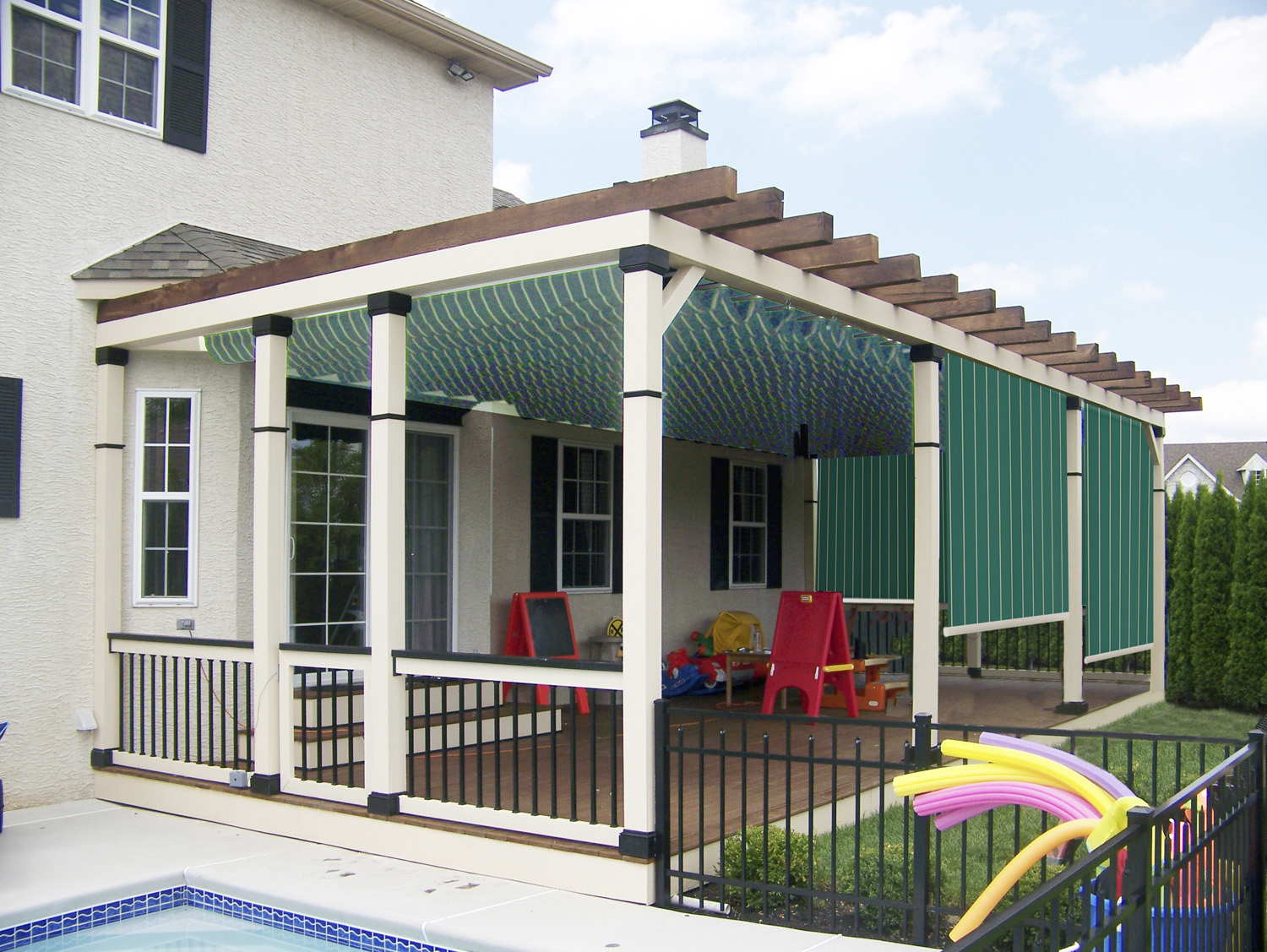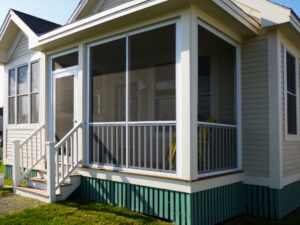Outdoor spaces often feel incomplete without a sense of structure or purpose. That’s where pergolas come in. These simple yet stylish additions frame outdoor areas, making them more inviting and functional. Whether you’re creating a cozy corner or enhancing a large backyard, pergolas bring a perfect blend of beauty and practicality. It’s no surprise they’re becoming a must-have in modern outdoor design.
What is a Pergola?
A pergola is an outdoor structure designed to add both function and aesthetic appeal to open spaces. At its core, it consists of vertical posts or pillars that support a grid of beams and rafters, creating a partially shaded area. Its open-roof design strikes a balance between shelter and openness, making it perfect for lounging, dining, or simply enjoying your backyard. Pergolas aren’t just practical—they’re a design element that shapes and elevates outdoor areas with minimal effort.
History and Evolution of Pergolas
Pergolas have been around for centuries, and their origins trace back to ancient times. The word itself originates from the Latin “pergula,” meaning “projecting eave.” These structures first appeared in ancient Egyptian, Greek, and Roman gardens, where they served as shaded walkways or gathering spots adorned with climbing plants like grapevines. Even in those early days, pergolas combined functionality with beauty, providing relief from the sun in warm climates.
During the Renaissance, pergolas gained popularity in European landscapes, particularly in Italy. They became a symbol of elegance, with intricate designs made from stone, wood, and climbing plants that framed gardens and outdoor spaces. Modern pergolas have evolved from those historical roots. Today, they come in a variety of styles and materials, ranging from traditional wood to sleek aluminum or vinyl, making them accessible to a wide audience. While their purpose has stayed the same—to enhance outdoor living—their designs have adapted to fit both classic and contemporary tastes.
Different Types of Pergolas
Pergolas come in different shapes and styles, making it easy to find one that suits your space and needs. Here are the most common types:
- Freestanding Pergolas
As the name suggests, these are standalone structures that don’t need to attach to a building. They’re perfect for creating focal points in gardens or defining separate zones in a backyard. Picture a pergola framing an outdoor seating area or a poolside retreat—it stands strong on its own while adding function and visual interest. - Attached Pergolas
These pergolas are extensions of a home or building, often secured to an exterior wall. They’re ideal for creating shaded patios or covering walkways leading to a garden. Imagine a seamless flow from your living space to the outdoors, with an attached pergola acting as a natural transition point. - Retractable Pergolas
Need something versatile? Retractable pergolas are the answer. They feature adjustable canopies or coverings that you can open or close depending on the weather. This flexibility allows you to enjoy full sun on cooler days or shade during hot afternoons—all at the push of a button or pull of a cord. - Arched Pergolas
These offer a twist on the classic flat-roof design by incorporating an arched or curved roof. The result is a softer, more elegant look that feels less angular and more inviting. Arched pergolas often pair well with climbing plants like wisteria for a dramatic, romantic vibe.
Each type of pergola provides its own unique benefits, so think about your space, style, and needs when choosing the right one for your outdoor area. Whether you want something bold and freestanding or a subtle extension of your home, there’s a pergola design out there that fits your vision.
The Functional Benefits of Pergolas
A pergola isn’t just a decorative structure—it’s a practical asset that transforms outdoor areas. Its unique design offers a balance of style, comfort, and utility, making it a smart addition to any backyard. Let’s explore its key functional benefits.
Providing Shade and Comfort
One of the standout benefits of a pergola is its ability to create a shaded, comfortable retreat. Unlike solid roof structures, pergolas filter sunlight through their open slats, striking the perfect balance between sun and shade. This allows you to enjoy outdoor spaces even on hot days without feeling enclosed.
Airflow is another major perk. Because of their open design, pergolas don’t trap heat or block the breeze. It’s like having the luxury of shade without sacrificing the fresh, airy feel of the outdoors. Whether you’re sipping iced tea or hosting an alfresco dinner, pergolas make it easy to stay cool while still soaking in natural light.
You can also enhance the shade by adding accessories like retractable canopy covers, fabric drapes, or climbing plants. Imagine a lush vine creeping along the beams, offering natural protection from the sun while adding a splash of greenery. It’s charm and utility wrapped in one.
Defining Outdoor Living Spaces
Pergolas are like borders without walls—they help define spaces without closing them off. By adding a pergola, you can visually separate different functional areas while keeping an open, inviting layout.
- Need a dedicated spot for outdoor dining? Place a pergola over your table setup, and you’ve instantly created an intimate dining nook.
- Want a lounge area for relaxation? Add cozy seating under a pergola, and it feels like you’ve just built an outdoor room.
- Have garden pathways or entryways? Frame them with pergolas for a touch of elegance that draws the eye.
They essentially act as a focal point, anchoring the design of your backyard. Without breaking up the flow of the space, pergolas signal that “this area has a purpose.” Whether it’s for unwinding, entertaining, or simply admiring your garden, they give shape to open areas that might otherwise feel undefined.
Increased Property Value
A pergola is more than an outdoor feature—it’s an investment. Homes with thoughtful landscaping and outdoor enhancements like pergolas often stand out in the market, and here’s why.
First, they add curb appeal. A well-designed pergola instantly elevates the aesthetic of a backyard, making it look polished and inviting. Potential buyers see it not just as a structure, but as an opportunity. It suggests versatile outdoor living, whether that means weekend barbecues, quiet mornings with coffee, or hosting friends under evening string lights.
Second, they’re a cost-effective upgrade. Compared to building enclosed patios or extending indoor spaces, pergolas deliver a significant visual impact at a fraction of the cost. Buyers recognize their practicality and charm, making your property more desirable.
It’s like adding a feature that blends beauty with function, appealing equally to lifestyle needs and financial logic. So whether you’re staying put or planning to sell, a pergola gives your home an edge by increasing its livable appeal.
Designing a Pergola for Your Needs
Choosing the right pergola isn’t a one-size-fits-all solution. Your design should reflect both practical needs and personal style. From selecting the best materials to incorporating greenery, thoughtful decisions can elevate your pergola into a standout feature of your outdoor space.
Material Choices
The material you choose for your pergola affects its durability, maintenance, and overall look. Here’s a breakdown of the most common options:
- Wood
Wood is a classic choice that never goes out of style. It offers a natural, warm aesthetic that blends seamlessly with outdoor spaces. Popular wood types include cedar, redwood, and pressure-treated pine.- Pros:
- Timeless appearance
- Can be painted or stained for customization
- Durable when treated properly
- Cons:
- Requires regular maintenance like staining or sealing
- Susceptible to rot and pests without proper care
- Pros:
- Vinyl
Vinyl pergolas are low-maintenance and modern. They’re great for those who want a clean, polished look with minimal upkeep.- Pros:
- Resistant to weather and insects
- No need for painting or staining
- Lightweight and easy to install
- Cons:
- Limited color options (usually white or neutral tones)
- May not have the natural charm of wood
- Pros:
- Metal
Options like aluminum or steel create a sleek, contemporary vibe. Metal pergolas are designed to last for years with little upkeep.- Pros:
- Extremely durable
- Ideal for modern designs
- Resistant to most environmental damage
- Cons:
- Can get hot to the touch in sunny climates
- May lack the cozy feel of wood or vinyl
- Pros:
When choosing, think about your climate, budget, and how much time you’re willing to spend on maintenance. A wood pergola might be perfect for rustic charm, while vinyl or metal is better suited for a low-maintenance lifestyle.
Popular Pergola Styles
The style of your pergola can set the tone for your entire backyard. Here are a few ideas tailored to different aesthetics:
- Modern
Clean lines and minimal embellishments define this style. Modern pergolas often use materials like metal or painted wood for a crisp, uncluttered look. They’re perfect for pairing with sleek outdoor furniture or geometric planters. - Rustic
Rustic pergolas have a charming, weathered vibe. Think rough-cut wood, exposed hardware, and earthy tones. This style pairs well with natural landscapes and cozy outdoor spaces. - Mediterranean
If you want to channel the feel of Tuscany or southern Spain, opt for a Mediterranean-inspired design. Curved beams, tiled accents, and a focus on climbing plants give this style its signature aesthetic. - Minimalist
Simple yet striking, minimalist pergolas stick to basic shapes and neutral colors. They prioritize functionality over ornamentation and blend well with modern homes or smaller spaces.
Your pergola should complement your home and reflect your personal tastes. For example, a Mediterranean pergola works beautifully with stucco homes, while a modern style suits contemporary architecture.
Incorporating Plants and Greenery
Greenery can transform a pergola from a basic structure into a lush, welcoming retreat. Adding plants isn’t just about decoration—it’s about creating an environment that feels alive and vibrant.
- Climbing Plants
Climbing plants are a natural fit for pergolas, using the beams for support as they grow. Popular choices include:- Wisteria: Known for its cascading purple blooms and pleasant fragrance
- Jasmine: A fragrant option that thrives in warm climates
- Grapevines: Functional and decorative, especially if you enjoy fresh grapes
- Honeysuckle: Adds a sweet scent and attracts pollinators like hummingbirds
- Hanging Planters
If climbing plants aren’t your style, consider hanging planters. These are an easy way to add pops of color and greenery without commitment. Look for ferns, petunias, or even herbs to double as decoration and utility. - Vertical Gardens
Vertical planters can be hung directly onto the pergola’s beams for a modern twist. This is a great option for small spaces or if you want to try something unique.
Plants soften the look of your pergola while providing shade, privacy, and cooling benefits. They also create a serene environment, making your outdoor space feel like an extension of nature.
Decorating and Enhancing Your Pergola
A pergola is a canvas waiting to be transformed. While its structure provides definition, thoughtful additions can elevate it into an inviting and functional space. From lighting to furniture to seasonal upgrades, customizing your pergola ensures it reflects your style and meets your needs.
Lighting Options
The right lighting can completely change the atmosphere of your pergola. Whether you’re hosting friends or relaxing solo, it sets the tone for your outdoor experience. Here are a few ideas:
- String Lights: Drape them along the beams for a cozy, magical vibe. Choose warm white for elegance or colorful options for playful energy.
- Lanterns: Use freestanding lanterns on your pergola floor or hang them at varying heights for a layered effect. Solar-powered options save energy and skip the need for outlets.
- Built-in Fixtures: For a sleek, modern look, install recessed or mounted lights directly on the beams. LED strip lights can tuck under the framework for subtle illumination.
Consider dimmable lights for flexibility. Bright when it’s time for dining, low when you want a quiet evening under the stars.
Furniture and Accessories
Your pergola should feel like an extension of your home. The right furniture and decor can make it cozy, stylish, and practical.
- Seating: Opt for weather-resistant chairs, loveseats, or sectional sofas. Add cushions with durable fabrics to ensure comfort and longevity.
- Tables: A sturdy coffee table or dining table anchors the space. Pick sizes that suit your layout, whether it’s for meals or casual drinks.
- Decor Items:
- Outdoor rugs for softness underfoot.
- Throw blankets for chilly evenings.
- Decorative lanterns or vases for visual interest.
Don’t forget functionality. A side table for snacks, a storage bench for outdoor essentials, and some hooks for hanging tools or accessories all come in handy.
Seasonal Adaptations
Want to enjoy your pergola throughout the year? With a few adjustments, you can make it a year-round retreat.
- Cold Weather: Add portable heaters for warmth. Hang thick, weatherproof curtains to block wind and trap heat inside.
- Hot Weather: Install a retractable canopy for extra shade. Use fans to keep air circulating, especially during humid months.
- Rainy Days: Waterproof pergola covers or tarps protect your space from showers. Roll them out when needed and stash them during clear skies.
These changes ensure your pergola is ready for every season, so you never miss a moment to be outdoors.
With the right touches, your pergola becomes more than just a structure—it’s a destination. By adapting it to your lifestyle and the seasons, you create a space that’s equal parts beauty and utility.
Tips for Installing and Maintaining Pergolas
Adding a pergola to your outdoor space is an exciting step. It creates a stylish, functional spot for relaxation and entertainment. However, proper installation and maintenance are critical to ensure it lasts for years. Here are practical tips to guide you through the process and keep your pergola looking and performing its best.
Installation Best Practices
Whether you’re building your pergola on your own or working with professionals, following best practices ensures a stable, secure, and visually appealing result. Here’s how to approach the installation:
- Plan Ahead
- Measure your space carefully to determine the right size for your pergola.
- Check local building codes or HOA requirements to avoid setbacks.
- Choose the right location, considering sun exposure, wind patterns, and proximity to your home.
- Pick the Right Materials
- Wood: Offers natural charm but requires sealing or staining to prevent damage.
- Vinyl: Lightweight, low-maintenance, and great for humid climates.
- Metal: Durable and modern, but may require rust protection in wetter regions.
- Prepare the Ground
- Ensure the ground is level and compact before installation.
- For freestanding pergolas, secure the foundation with concrete footings or pavers to prevent tilting.
- Use Quality Fasteners
- Opt for stainless steel hardware to resist corrosion and provide long-term stability.
- Tighten bolts and screws snugly, but avoid over-tightening to prevent wood from splitting.
- Consult Professionals for Larger Projects
- If you’re not confident in your DIY skills or installing a complex pergola, hire an experienced contractor.
- They’ll ensure proper anchoring, structural integrity, and compliance with local regulations.
- Double-Check Measurements
- Before final assembly, confirm all parts fit correctly. It’s better to adjust now than later.
Taking the time to get your pergola installed correctly pays off. It becomes a solid, attractive feature of your outdoor space—ready for any gathering or relaxing afternoon.
Maintenance and Longevity
Once your pergola is installed, keeping it in great condition ensures it remains a centerpiece of your outdoor area. Routine maintenance not only keeps it looking fresh but also extends its lifespan. Here’s how to care for different pergola materials:
- Wood Pergolas
- Clean with mild soap, warm water, and a soft brush to remove dirt and debris.
- Stain or Seal Regularly: Apply a weatherproof stain or sealant every 1-2 years to protect against moisture, UV rays, and pests.
- Inspect for rot or termite damage periodically, and replace compromised wood immediately.
- Sand and re-stain rough spots to prevent splinters.
- Vinyl Pergolas
- Hose down monthly or clean with a gentle soap and sponge to remove grime.
- Avoid abrasive cleaners as they may scratch the surface.
- Check all joints and fasteners yearly to ensure stability.
- Metal Pergolas (Aluminum or Steel)
- Use a damp cloth or sponge with a mild detergent to clean.
- Inspect for any signs of rust or corrosion. Touch up with rust-resistant paint as needed.
- Apply lubricant to moving parts, especially if your pergola features a retractable canopy.
- General Tips for All Pergolas
- Prune climbing plants regularly to prevent excess weight or moisture buildup on the structure.
- Clean gutters or drains around attached pergolas to reduce water damage risks.
- Trim low-hanging tree branches near the pergola to avoid scratches or falling debris.
- Seasonal Care
- Before Winter: Cover your pergola with a waterproof tarp or canopy in snowy regions. Clear snow promptly to prevent stress on the frame.
- In Spring: Check for damage caused by winter wear and refresh finishes if necessary.
Pergolas, like any outdoor feature, thrive with care. With just a little effort, you can keep yours standing tall and looking beautiful for years. Maintaining it is less about heavy lifting and more about staying ahead of wear and tear. After all, your outdoor oasis deserves only the best attention.
Inspiring Pergola Ideas for Outdoor Spaces
Pergolas are more than just structures—they’re the backbone of outdoor design. Whether you have a sprawling backyard or a cozy patio, pergolas shape spaces with a mix of style and function. From adding charm to utility, they redefine how we experience the outdoors. Here are some creative ways to use pergolas for different outdoor setups.
Pergolas for Small Gardens
Limited space doesn’t mean limited options. Even in compact gardens, pergolas make a huge difference by adding depth and function.
- Slim, Compact Designs: Choose a pergola with a small footprint to avoid overwhelming the space. Slim, vertical beams create height without taking up precious square footage.
- Corner Pergolas: Position your pergola in a corner to maximize open space while creating a designated seating or lounging area.
- Climbing Plants: Let plants like ivy or jasmine grow on the pergola’s beams. This not only softens the structure but also provides natural shade.
- Dual-Purpose Features: Hang planters, string lights, or even a small retractable canopy for added versatility.
Small gardens benefit tremendously from pergolas. They create cozy, defined areas and make the space feel more intentional and less crowded.
Poolside Retreats
A pergola by the pool isn’t just practical—it’s a style statement. It turns your pool area into a relaxing, luxurious escape.
- Shade and Sun Balance: Install a pergola with wide beams or an adjustable canopy. This keeps you cool without blocking natural light.
- Lounge Zones: Place comfortable seating or daybeds underneath. Add water-resistant cushions and fabrics for long-lasting durability.
- Tropical Vibes: Decorate the pergola with lush greenery like palm plants or hang breezy curtains for that resort-like feel.
- String Lighting: Create an evening glow by wrapping string lights around the beams, turning the space into a magical nighttime oasis.
A poolside pergola isn’t just functional—it makes the entire area more inviting. It’s perfect for lounging post-swim or hosting pool parties with style.
Outdoor Dining Areas
If you love dining al fresco, a pergola is the cherry on top. It frames your dining space and adds an intimate touch.
- Overhead Charm: Use draped fabrics, fairy lights, or even an outdoor chandelier to create a cozy vibe above your dining table.
- Built-In Features: Attach shelves or mount hooks to the pergola beams for storing grilling tools, utensils, or potted herbs.
- Rustic Dining: For a natural look, pair a wooden table with a wood pergola. Add string lights and a few lanterns for warmth.
- All-Season Comfort: If you’re serious about year-round dining, go for a pergola with a retractable roof. It’s easy to adjust for weather changes.
By framing your outdoor dining area, a pergola creates an intentional setting where meals feel more special, whether it’s breakfast or a summer barbecue.
Connecting Indoor and Outdoor Spaces
An attached pergola is a seamless way to merge your indoor life with the outdoors. It blends home and backyard into one cohesive experience.
- Extended Living Space: Install an attached pergola over a patio or deck right outside your back door. This makes it feel like an extension of your indoor living room.
- Sliding Doors Meet Pergola: Pair large glass doors with the pergola for a smooth transition. Open the doors to make the space feel larger and more open.
- Stylish Connections: Use similar materials or colors from your home’s exterior to tie the pergola into the architecture.
- Functional Features: Add ceiling fans, heaters, or built-in lighting under the pergola to create a year-round usable space.
An attached pergola acts as a natural bridge between your indoor space and backyard. It’s effortless, inviting, and perfect for blending functionality with good looks.
Conclusion
Pergolas are the perfect way to bring structure, style, and purpose to your outdoor spaces. They do more than just look great—they create cozy retreats, define areas, and increase your home’s value.
Whether you’re designing a shaded lounge, a dining area, or a vibrant garden backdrop, pergolas add both function and charm. With countless styles and customization options, they fit seamlessly into any outdoor setup.
Ready to upgrade your yard? Explore pergola designs or connect with a professional to bring your vision to life. The possibilities are endless.






